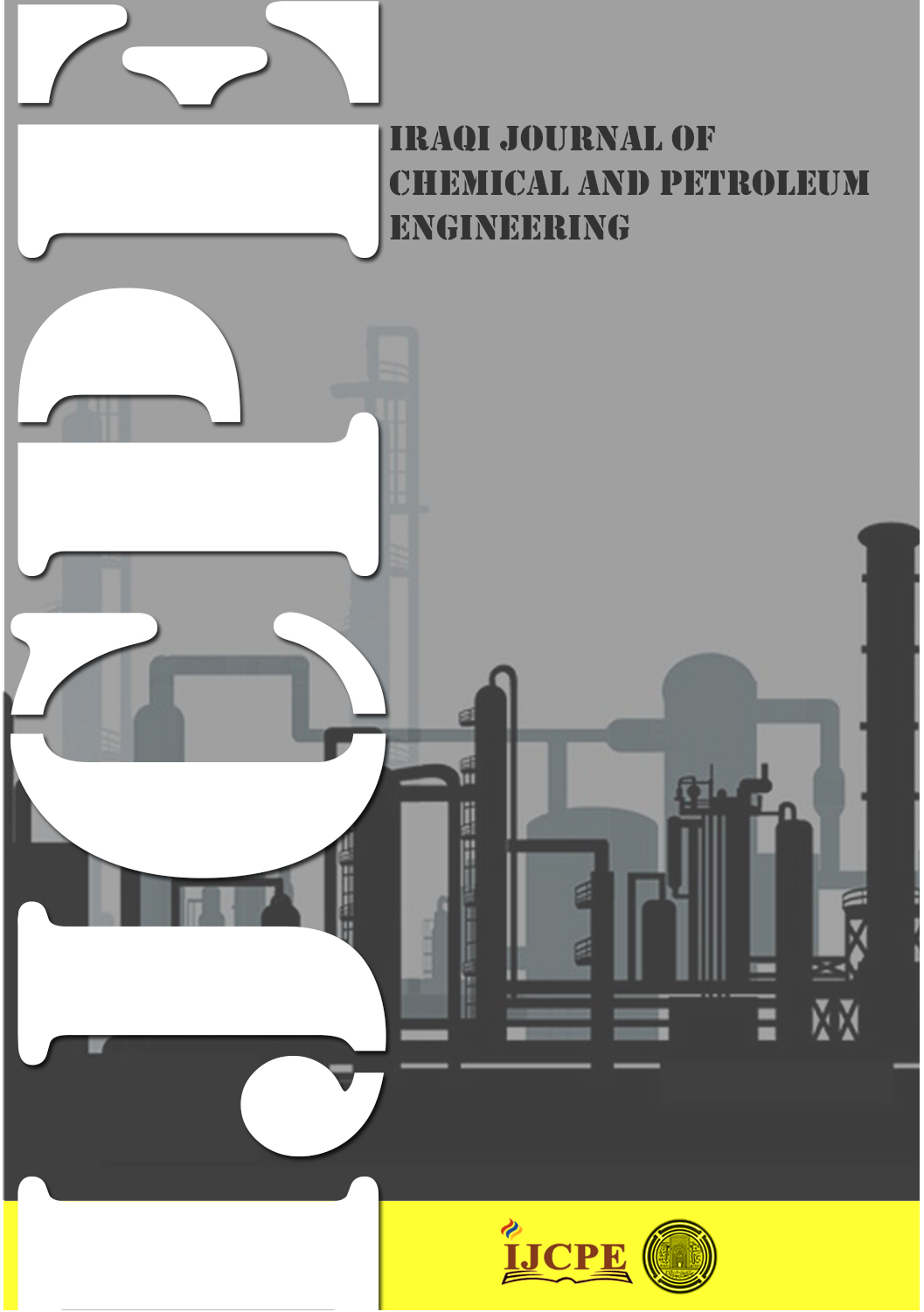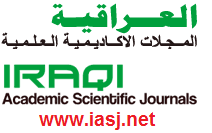Optimization of well locations in tight oil reservoir based on genetic algorithm
DOI:
https://doi.org/10.31699/IJCPE.2025.1.16Keywords:
Well placement optimization; Genetic algorithm; Reservoir simulation; Tight reservoirs; Infill oil wellsAbstract
In recent years, energy demand has constantly grown worldwide, promoting the oil and gas sector to develop innovative solutions for improving productivity from unconventional reservoirs such as tight oil reservoirs. One of the significant issues in this area is determining the optimal well locations to maximize net present value (NPV). This procedure involves analysing several factors such as reservoir geometry, permeability, porosity distribution or fluids contact, and other factors that affect locations and number of infill wells. The difficulty of these considerations, combined with economic concerns and reservoir related risks, makes it even more challenging to identify the optimum development program for a given field. In this context, this study provides a useful optimization approach for identifying the optimal well location in the Halfaya oil field, a southern Iraqi tight oil field. This approach aims to overcome the issues related to optimizing reservoir development. This study employed the Genetic Algorithm as the main optimization engine due to its effectiveness in solving multidimensional and nonlinear problems. Multiple scenarios were developed with specified well configurations to identify the best scenario for maximizing NPV. This involves conducting multiple optimization runs using the Petrel/Eclipse software to develop a reliable field plan. Consequently, cumulative production for this oilfield has been comprehensively defined and reviewed. The results showed that the genetic algorithm gives acceptable values in optimization problems with relatively few decision variables. This led to an increase in NPV by 5.63%, 19.63 % and 29.30% for scenarios of one, three and five infill wells, respectively.
Received on 14/04/2024
Received in Revised Form on 08/11/2024
Accepted on 08/11/2024
Published on 30/03/2025
References
[1] S. A. Jassam and O. Al-Fatlawi, "Development of 3D Geological Model and Analysis of the Uncertainty in a Tight Oil Reservoir in the Halfaya Oil Field," The Iraqi Geological Journal, pp. 128-142, 2023. https://doi.org/10.46717/igj.56.1B.10ms-2023-2-18
[2] D. Sadeq, S. Iglauer, M. Lebedev, and A. Barifcani, "Prediction of hydrate phase equilibrium conditions for different gas mixtures," in Offshore Technology Conference Asia, 2018: OTC, p. D022S001R012. https://doi.org/10.4043/28478-MS
[3] D. J. Soeder, "The successful development of gas and oil resources from shales in North America," Journal of Petroleum Science and Engineering, vol. 163, pp. 399-420, 2018. https://doi.org/10.1016/j.petrol.2017.12.084
[4] G. M. Farman, A. K. Farouk, and A. A. Alhaleem, "Comparative Study between Different Oil Production Enhancement Scenarios in an Iraqi Tight Oil Reservoir," Iraqi Journal of Chemical and Petroleum Engineering, vol. 24, no. 2, pp. 97-105, 2023. https://doi.org/10.31699/IJCPE.2023.2.11
[5] O. Al-Fatlawi, M. H. Mofazzal, S. Hicks, and A. Saeedi, "Developed material balance approach for estimating gas initially in place and ultimate recovery for tight gas reservoirs," in Abu Dhabi International Petroleum Exhibition & Conference, 2016: OnePetro. https://doi.org/10.2118/183015-MS
[6] O. Al-Fatlawi, M. Hossain, and A. Essa, "Optimization of fracture parameters for hydraulic fractured horizontal well in a heterogeneous tight reservoir: an equivalent homogeneous modelling approach," in SPE Kuwait Oil & Gas Show and Conference, 2019: OnePetro. https://doi.org/10.2118/198185-MS
[7] O. Al-Fatlawi, M. Hossain, N. Patel, and A. Kabir, "Evaluation of the potentials for adapting the multistage hydraulic fracturing technology in tight carbonate reservoir," in SPE Middle East Oil and Gas Show and Conference, 2019: SPE, p. D022S054R002. https://doi.org/10.2118/194733-MS
[8] A. H. Hashim, M. S. Al-Jawad, and K. A. Klati, "Utilizing Reservoir Model to Optimize Future Oil Production for Hydraulic Fracture Wells in Tight Reservoir," The Iraqi Geological Journal, pp. 21-36, 2023. https://doi.org/10.46717/igj.56.2B.2ms-2023-8-11
[9] H. Wang, X. Liao, N. Lu, Z. Cai, C. Liao, and X. Dou, "A study on development effect of horizontal well with SRV in unconventional tight oil reservoir," Journal of the Energy Institute, vol. 87, no. 2, pp. 114-120, 2014. https://doi.org/10.1016/j.joei.2014.03.015
[10] D. A. Al-Obaidi and B. I. Ahmed, "Optimization of Horizontal Well Location and Completion to Improve Oil Recovery for an Iraqi Field," The Iraqi Geological Journal, pp. 228-245, 2023. https://doi.org/10.46717/igj.56.2F.15ms-2023-12-21
[11] X. Zhou et al., "Evaluation of enhanced oil recovery potential using gas/water flooding in a tight oil reservoir," Fuel, vol. 272, p. 117706, 2020. https://doi.org/10.1016/j.fuel.2020.117706
[12] S. J. Naser and G. M. Farman, "Optimizing water injection performance by using sector modeling of the Mishrif Formation in West Qurna-1 Oil Field, Southern Iraq," The Iraqi Geological Journal, pp. 59-74, 2021. https://doi.org/10.46717/igj.54.2D.5Ms-2021-10-24
[13] W. J. Al-Mudhafar, D. A. Wood, D. A. Al-Obaidi, and A. K. Wojtanowicz, "Well Placement Optimization through the Triple-Completion Gas and Downhole Water Sink-Assisted Gravity Drainage (TC-GDWS-AGD) EOR Process," Energies, vol. 16, no. 4, p. 1790, 2023. https://doi.org/10.3390/en16041790
[14] O. Al-Fatlawi, A. R. Vimal Roy, M. M. Hossain, and A. H. Kabir, "Optimization of infill drilling in Whicher range field in Australia," in SPE Kingdom of Saudi Arabia Annual Technical Symposium and Exhibition, 2017: OnePetro. https://doi.org/10.2118/188085-MS
[15] Z. A. Al-Sadi and D. J. Sadeq, "Genetic Algorithm-Based Well Placement Optimization: A Review of Studies," The Iraqi Geological Journal, pp. 246-264, 2023. https://doi.org/10.46717/igj.56.2F.16ms-2023-12-22
[16] Z. A. Al-Rubiay and O. F. Al-Fatlawi, "A Survey of Infill Well Location Optimization Techniques," The Iraqi Geological Journal, pp. 43-51, 2023. https://doi.org/10.46717/igj.56.1E.4ms-2023-5-14
[17] A. Dheyauldeen, O. Al-Fatlawi, and M. M. Hossain, "Incremental and acceleration production estimation and their effect on optimization of well infill locations in tight gas reservoirs," Journal of Petroleum Exploration and Production Technology, vol. 11, no. 6, pp. 2449-2480, 2021.
https://doi.org/10.1007/s13202-021-01179-1
[18] L. Guan and Y. Du, "Fast method finds infill drilling potentials in mature-tight reservoirs," in SPE International Oil Conference and Exhibition in Mexico, 2004: SPE, pp. SPE-91755-MS. https://doi.org/10.2118/91755-MS
[19] H. H. Mahmood and O. F. Al-Fatlawi, "Construction of comprehensive geological model for an Iraqi Oil Reservoir," The Iraqi Geological Journal, pp. 22-35, 2021. https://doi.org/10.46717/igj.54.2F.3ms-2021-12-20
[20] D. Janiga, R. Czarnota, J. Stopa, and P. Wojnarowski, "Self-adapt reservoir clusterization method to enhance robustness of well placement optimization," Journal of Petroleum Science and Engineering, vol. 173, pp. 37-52, 2019. https://doi.org/10.1016/j.petrol.2018.10.005
[21] A. K. Noori, S. A. Lazim, and A. A. Ramadhan, "Geological Model of the Tight Reservoir (Sadi Reservoir-Southern of Iraq)," Journal of Engineering, vol. 25, no. 6, pp. 30-43, 2019. https://doi.org/10.31026/j.eng.2019.06.03
[22] A. H. Smout, "Three new Cretaceous genera of foraminifera related to the Ceratobuliminidae," Micropaleontology, vol. 2, no. 4, pp. 335-345, 1956.
[23] M. Chatton, Hart, E., "Review of the Cenomanian to Maastrichtian stratigraphy in Iraq," Iraq Petroleum Company, Paleontological Department, Kirkuk, Unpublished Report 1961.
[24] Ditmar, "Geological conditions and hydrocarbon prospects of the Republic of Iraq," Iraq Notional Oil Company, Baghdad, Report 1979 1979.
[25] J. A. Al-Sudani and K. M. Husain, "Evaluation of acid and hydraulic fracturing treatment in halfaya oil field-sadi formation," Iraqi Journal of Chemical and Petroleum Engineering, vol. 18, no. 4, pp. 25-33, 2017. https://doi.org/10.31699/IJCPE.2017.4.3
[26] H. A. Baker and A. S. Awad, "Reservoir Characterizations and Reservoir Performance of Mishrif Formation in Amara Oil Field," Journal of Engineering, vol. 23, no. 12, pp. 33-50, 2017. https://doi.org/10.31026/j.eng.2017.12.03
[27] N. Jasim, S. M. Hamd-Allah, and H. Abass, "Specifying Quality of a Tight Oil Reservoir through 3-D Reservoir Modeling," Iraqi Journal of Science, pp. 3252-3265, 2020. https://doi.org/10.24996/ijs.2020.61.12.14
[28] D. Goldberg, "Genetic Algorithms in Search, Optimization and Machine Learning, Addition-Westly," Reading MA, 1989.
[29] J. H. Holland, "Adaptation in natural and artificial systems Cambridge," ed: Massachusetts-London, 1992.
[30] J. Jun, J. Kang, D. Jeong, and H. Lee, "An efficient approach for optimizing full field development plan using Monte-Carlo simulation coupled with genetic algorithm and new variable setting method for well placement applied to gas condensate field in Vietnam," Energy Exploration & Exploitation, vol. 35, no. 1, pp. 75-102, 2017. https://doi.org/10.1177/0144598716680307
[31] W. Al‐Mudhafar and M. Al‐Jawad, "Optimization of Infill OilWell Locations-Field-Sacle Application," Journal of Petroleum Science Research, vol. 4, no. 2, pp. 47-64, 2015.
[32] A. Y. Abukhamsin, "Optimization of well design and location in a real field," MS thesis, Stanford University, CA, 2009.
[33] A. Nabaei et al., "Topologies and performance of intelligent algorithms: a comprehensive review," Artificial Intelligence Review, vol. 49, pp. 79-103, 2018.https://doi.org/10.1007/s10462-016-9517-3
[34] W. J. Al-Mudhafar, M. S. Al-Jawad, and D. A. Al-Shamma, "Using optimization techniques for determining optimal locations of additional oil wells in South Rumaila oil field," in SPE International Oil and Gas Conference and Exhibition in China, 2010: SPE, pp. SPE-130054-MS. https://doi.org/10.2118/130054-MS
Downloads
Published
Issue
Section
License
Copyright (c) 2025 The Author(s). Published by College of Engineering, University of Baghdad.

This work is licensed under a Creative Commons Attribution 4.0 International License.













